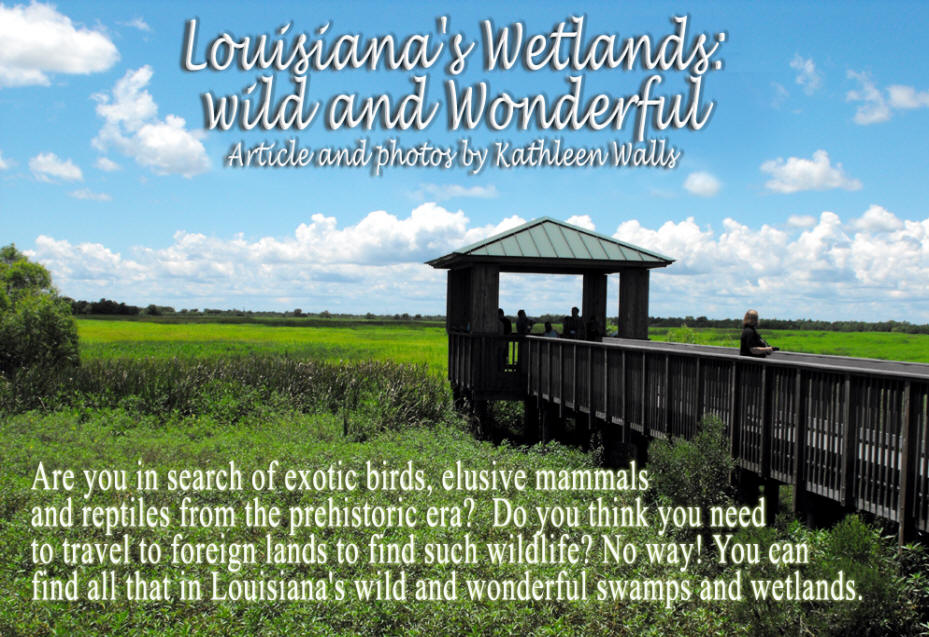
These are precious and endangered
places. Each year they face more dangers from natural causes
such as hurricanes and salt water incursion and even worse from
human causes such as development and waste dumping. Visit them
while that still exist in their primal states and do all you can
to help to preserver these natural treasures.
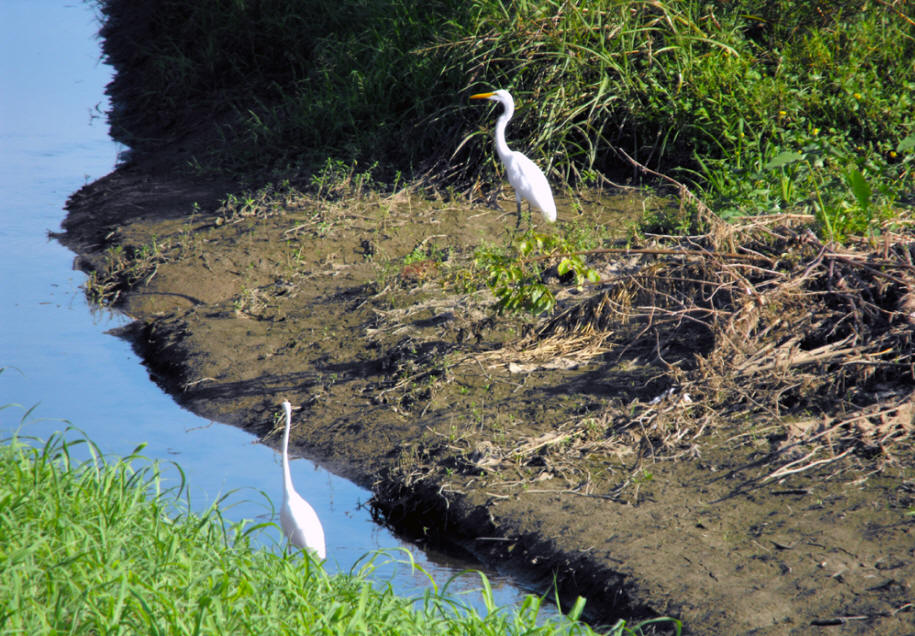 |
| A pair of snowy egrets looking
for food |
Creole Nature
Trail
winds through
Calcasieu and Cameron parishes.
Originally established in 1975 by the Louisiana legislature as a
scenic route. was recognized as a National Scenic Byway by the
Federal Highway Administration in 1996. It
was upgraded to an
All-American Road in 2002. That is the
highest possible
designation, considered a destination unto itself.
The Creole Nature Trail is truly a destination. It is filled
with refuges, wildlife sanctuaries, beaches, recreation areas
and trails. You could spend a day, a week or even a month,
fishing, hiking, camping birding, or just exploring the natural
beauty, and never see it all. There are a few small stores along
the Nature Trail for limited supplies but plan on bringing most
items you will need.
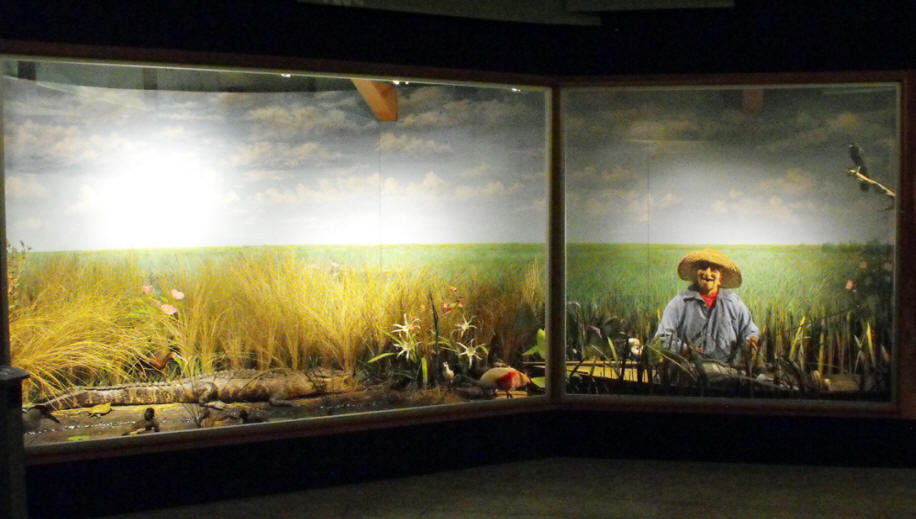 |
| Animated display at the Cameron
Prairie National Wildlife Refuge |
One good place to start is the
Cameron Prairie National
Wildlife Refuge. It serves as a visitors center and had
restrooms–important since they are scares along the Trail– and a
small museum to help you understand what you will see as you
meander along the Trail.
One of my favorite exhibits inside the museum is the animated
Cajun who "gon' tol' you about dat swamp, me."
He goes on to explain all about the wildlife found there and is
"joined by an animated woman, Tante Marie in a pirogue who
continues the tale of all the creatures found in the refuge.
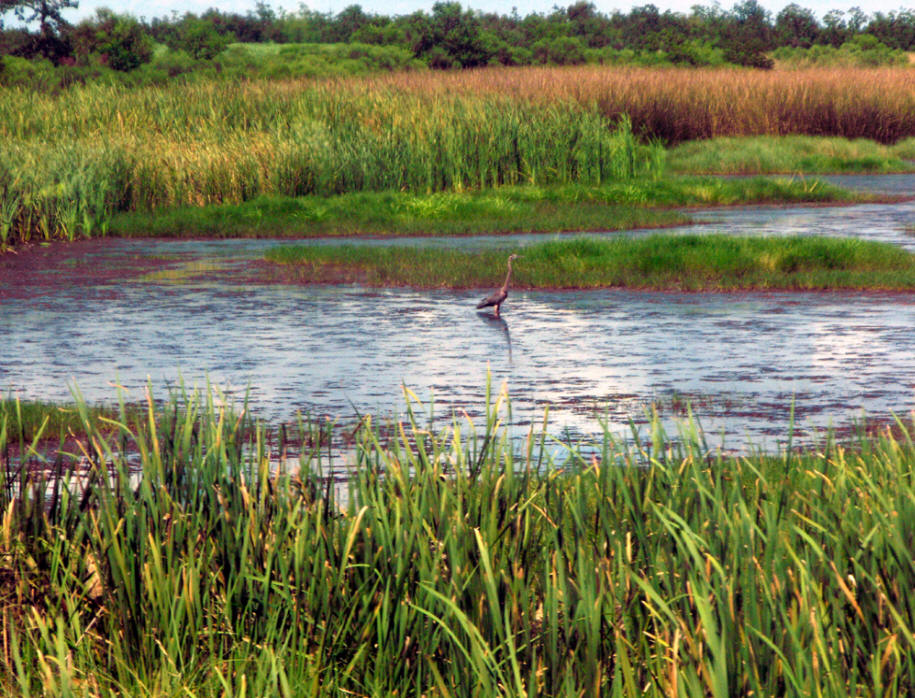 |
| Great blue heron in wades in the
water |
Outside, I could spent hours watching the alligators, turtles
and waterfowl from the boardwalk. There are records of 250 bird
species on the refuge. In early spring,
you are sure to see
migrating warblers, barn and tree swallows, kingbirds,
kingfishers, orchard orioles, and yellow-billed cuckoos.
white-fronted and white ibis also nest on the refuge as do
purple gallinules, roseate spoonbills, great egrets, and great
blue herons. I saw several herons, egrets and purple gallinules.
Naturally. I saw lots of alligators and turtles. If you are
lucky, you might spot an elusive bobcat and have a pretty good
chance of seeing some nutria, otters and deer.
 |
| Mosquito hawks get well fed here |
As we wended
out way towards the gulf through sparsely populated Cameron
Parish, there were still remnants of the destruction caused by
Hurricane Rita in 2005.
Cajun Man's
Swamp Cruise
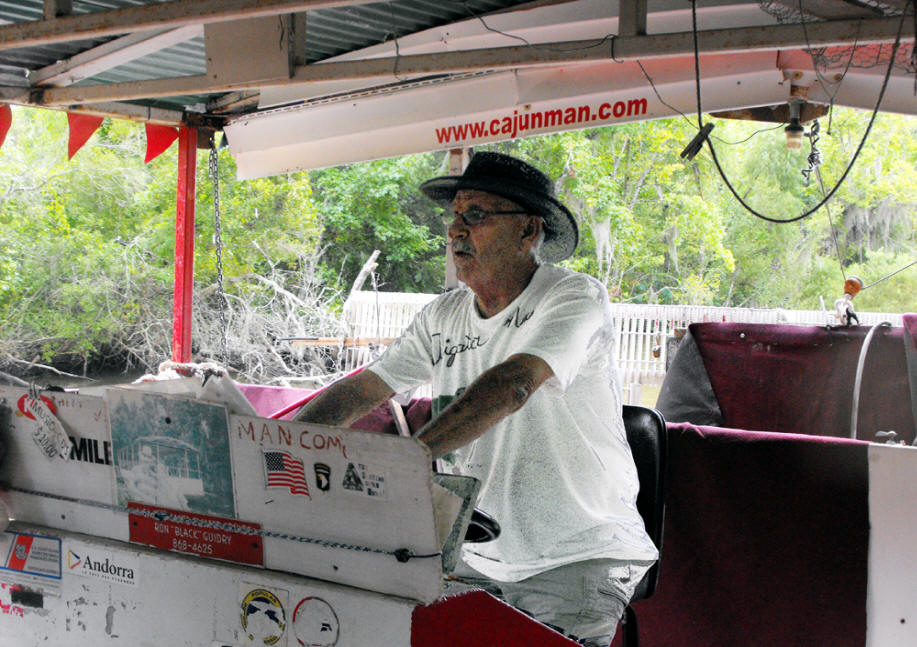 |
| Black Guidry tells us about his
watery paradise |
Another great way to get up close and
personal with Louisiana's wetlands is to take a Swamp Tour. I
took the Cajun Man's Swamp Cruise run by Ron "Black" Guidry and
loved every minute even though it rained. The tour is located
off of highway 182 on marina drive about 15 miles west of Houma.
Black promised "We all gonna pass a good time." He did not lie.
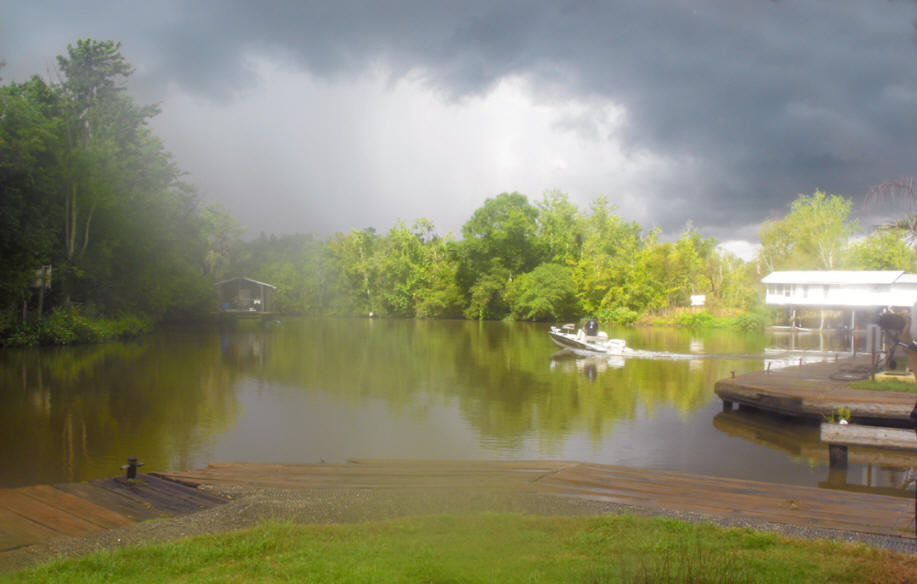 |
| There is somthing mystical about
Louisiana's waterways in the rain |
Black took us out in a pontoon boat
down a canal and into a
bayou deep into the wetlands, the marsh, freshwater and
saltwater, and swamp. There is a difference. A swamp is boggy
wetland where water seems to have almost no current, although
its water does rise and fall with the ebb and flow of the tides.
The wetlands refer to Louisiana's coastal wetlands that lie between
the Sabine River on the west and the Pearl River on the east.
They tend to be brackish or salty.
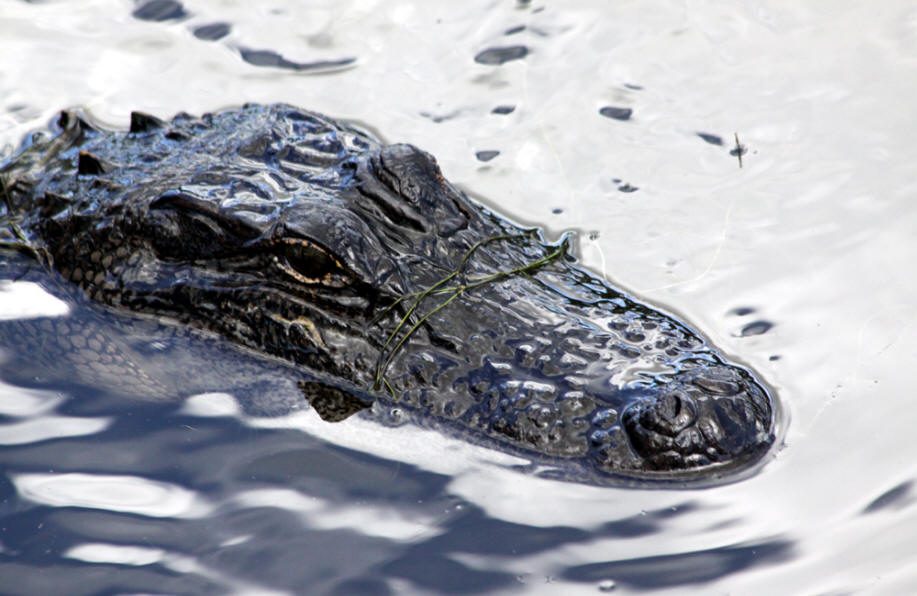 |
| Lots of 'gators to get up close
and personal with here |
A few other clarification
that will help you understand Louisiana's unique culture and
geography: a bayou (pronounced by-you) comes from a Choctaw word
"bayuk" and a pirogue (pronounced pee-roag) is a small wooden
boat originally carved from a hollowed tree log usually poled
but sometimes paddled.
We spotted lots of water birds. The
vegetation is unique out there. Lots of bald cypress trees with
the knobby knees protruding from the water. Spanish moss hung on
lots of the trees and there was a lot of flowering scrubs along
the water's edge. One with red flowers was particularly
noticeable. It is called a tropic creeper. The alligators stole
the show here, too. Black has several he has trained to come to
his call. One, Mamma, about an seven to eight foot one came
right to the boat and took some chicken he offered her from a
long pole. Black showed us the nests of baby 'gators along the
bank. He explained how he was saving Mama's life by feeding her.
He told us, "Alligators don't eat every day so 'cause I feed her
when I come out here, she won't take the chicken they bait the
poles wit''"
Bayou Terrebonne Waterlife Museum is a small yet interesting
museum in Houma that focuses on the wetlands and the culture of
the Acadians. One of my favorite exhibits here is the oyster
rake which let me actually experience scooping up oysters from
the beds like the actual oystermen do.
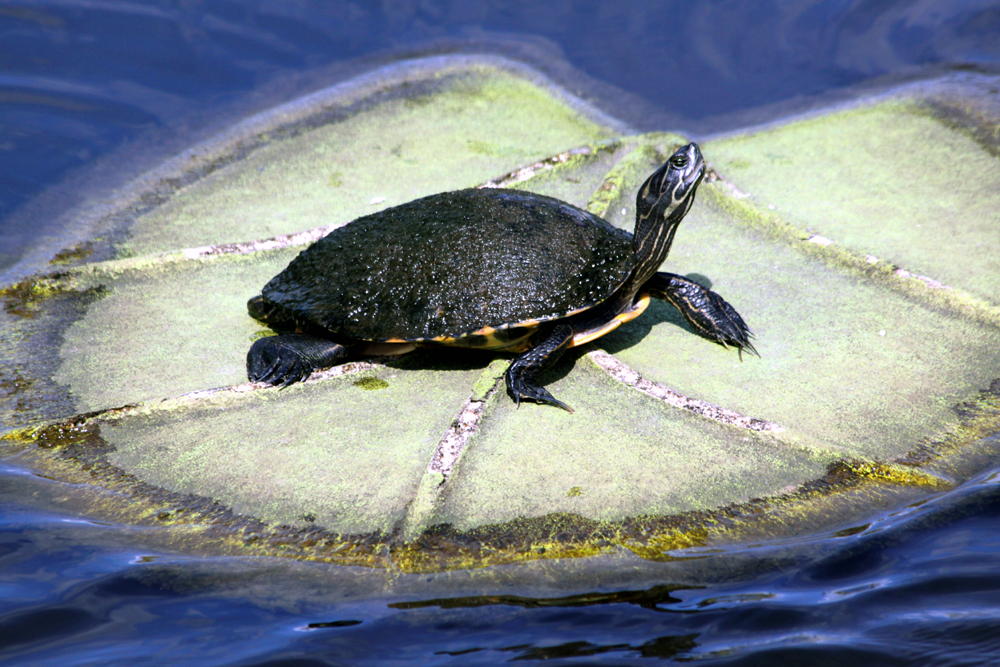 |
| This turtle was posing for me |
The huge stuffed alligator is a favorite
with kids and everyone loves to take their picture with the
life-sized cutouts of RJ Molinere and Jay Paul Molinere of Swamp
People
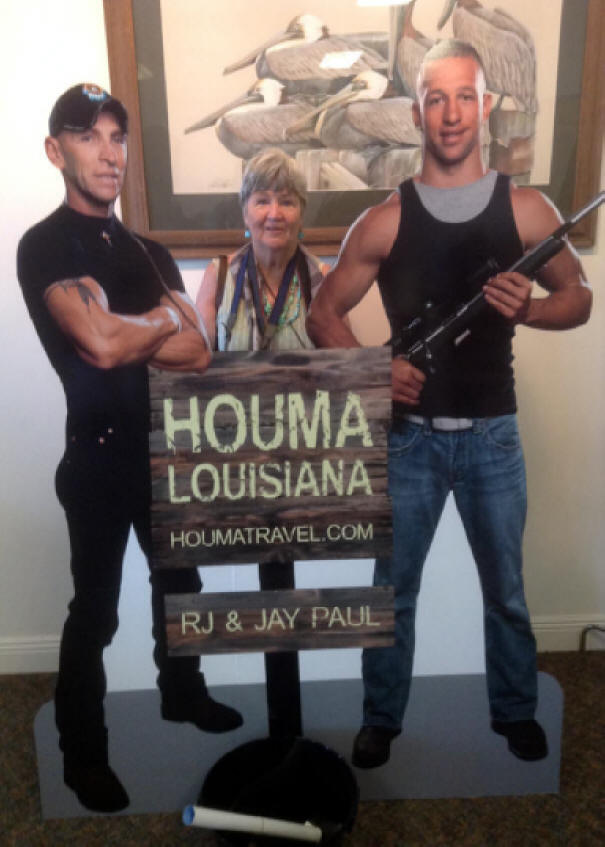 |
| The Swamp People got me |
In front of the museum is the Acadian
Deportation Cross Monument was created by the Societe Nationale
de l'Acadie . It was created to track the history of the French
people who were expelled from Canada and came to be known in
Louisiana as "Arcadians" or "Cajuns." It is one of 10 in the
entire world and the only one in the U.S.
There are many of these places but I am
only giving you a taste of a few. Go discover the rest of these
treasures for yourself in the wild and wonderful wetlands of
Louisiana.
For more info:
http://www.creolenaturetrail.org/
http://www.cajunman.com/
http://www.houmatravel.com/do/art-and-museums
|